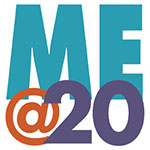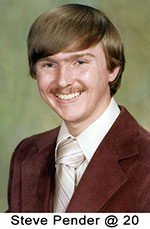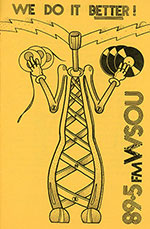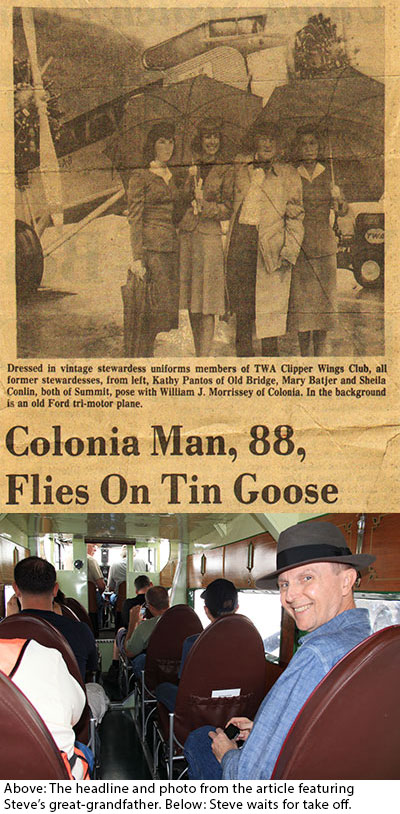Family Legacy Video is featured in this article about legacy planning in Investment News. I’m sure glad I picked up the phone when the reporter called!
You can read the article here.
Family Legacy Video is featured in this article about legacy planning in Investment News. I’m sure glad I picked up the phone when the reporter called!
You can read the article here.
I have a major jones for family stories. There, I’ve said it for the world to see. And you know what? I’m glad.
Looking back, I remember being drawn to personal history at an early age. My dad’s side of the family was pretty humongous, and throughout the years we’d attend picnics or holiday get-togethers at the homes of various aunts and uncles. I loved the food, and hanging out with my cousins. But my favorite time was always after we’d polished off the baked ziti and inhaled the pies, cakes and fruit salad. That was the time when the adults would settle down with brimming cups of coffee and reminisce about their lives and times and those of family members separated from us by mileage or the grim reaper.
The easy banter, the laughter, the rise and ebb of volume and energy as many voices gave way to one and then joined in again to relate other stories triggered by something just said; listening to my parents, grandparents, aunts and uncles during these late afternoon and early evening gab fests was just so – comforting. And there was also something about the relish with which my elders told their stories that made hearing their tales just plain fun. Yeah, I was hooked on family stories as a young ‘un.
Flashing forward, my undergraduate communications degree, plus a recommendation from a former college buddy, landed me a job in a New York City public relations firm specializing in the budding realm of video. I spent the next eight years and change learning to tell clients’ stories on video, first as a production assistant on shoots, and then as a video editor, writer, and producer/director. And when I got tired of sitting for hours on end in my company’s dark and cool edit suite, I launched a freelance career. I still spent lots of hours in editing suites, but at least there was variety, I got paid more, and I did get out into the sun more often.
But even though I enjoyed what I was doing, I felt, in my heart, that there should be something more that I could be doing with my skills. I even asked a psychic once if I would ever discover a higher purpose to which I could apply my video abilities. She said I would – although she wouldn’t or couldn’t tell me what form that higher purpose would take.
Enter my paternal grandmother, Alice Rita Morrissey Pender. Actually, Gram was part of my story all along. But in 1995 she would play a central role in helping me chart a new course for my life and career.
Gram was born on Staten Island, New York in 1911. She was blessed with a great memory and a gift for gab, and as I was growing up she shared oodles of stories about her life and our family. I learned how her grandparents emigrated from Ireland but didn’t meet until they were both living in New York City; about how her dad earned a ton of money in the storage battery business, only to lose it during the Great Depression and how he still managed to keep a roof over the family’s heads; there were stories about her grandfather, a police lieutenant stationed at New York City Hall, taking her into the city to witness ticker tape parades; the stories went on and on. And in addition to my enjoyment at hearing her tell them, I realize now that those life stories also grounded me. They gave me an insight into my family’s character (and characters), showed me where my family came from, where they fit into the world and how I fit into my family. Knowing those stories has given me an invaluable sense of identity that’s stayed with me throughout my life. Oh, by the way, I was her first grandchild, so I think we had a special bond because of that.
In 1995, I realized that Gram wouldn’t be around forever. I decided to try and capture her, and some of her stories, on video. Now, these were still the tape-to-tape days, when video editing was done in very expensive editing bays, so there was no way I could shoot and edit the project without a little help. Luckily, one of my corporate clients lent me the use of their video gear and editing suite and one of my colleagues kindly ran camera for me. And so it was that in 1995, I sat down with Gram in my Clifton, NJ, apartment and captured her on-camera, telling me those same wonderful stories I’d heard from her over the years.
Long story short: Due to procrastination and work demands, I didn’t tackle the editing until 1998. But that summer, I made a concerted push and finished what will always be one of my proudest achievements: a documentary featuring my grandmother telling the story of her life. Unfortunately, she died without seeing the video. I will always regret not hustling over to her the moment I wrapped work on her video to “premiere” it for her. But I also know that I’d never have been able to forgive myself if I hadn’t captured her, and her stories, for posterity.
So the first time the majority of my family saw Gram’s video biography was at the repast following her funeral. As you can imagine, my emotions took a roller coaster ride that day. But the video truly transformed a day of mourning into a celebration of life. After seeing the impact Gram’s legacy video had on my family that day and during the days that followed, the higher purpose I spoke of earlier began to reveal itself. More on that in another post. Thanks for reading.
Oh, and by the way: What’s your story?
An Oklahoma school recently uncovered classroom blackboards containing lessons, writing and art from 1917. Very cool! Check them out here.
Voice mails can preserve the sounds and memories of loved ones who have passed, according to this story. But you can preserve, celebrate and capture so much more with a custom video biography!
 When I hit 20, I was a couple of months into my junior year at college, where radio was my life. When I wasn’t in class, or working part-time to earn enough money to pay tuition and buy lunch at the Campus Sub Shop, you’d find me at the Seton Hall University radio station, WSOU-FM. I loved being in front of a microphone, and did everything from reading news, to anchoring our election-night coverage, to spinning records on both an early-morning pop music “wake up” show called Bacon ‘n’ Eggs and our late-night “progressive rock” offering called Nightrock.
When I hit 20, I was a couple of months into my junior year at college, where radio was my life. When I wasn’t in class, or working part-time to earn enough money to pay tuition and buy lunch at the Campus Sub Shop, you’d find me at the Seton Hall University radio station, WSOU-FM. I loved being in front of a microphone, and did everything from reading news, to anchoring our election-night coverage, to spinning records on both an early-morning pop music “wake up” show called Bacon ‘n’ Eggs and our late-night “progressive rock” offering called Nightrock.
What I really loved, however, was writing and producing; being able to write a script, direct actors, and edit a finished piece of audio that came out of the speakers sounding like it originally did when I “heard it” in my head was a gas. In fact, my first professional award came when I was 20, for a series of promotional announcements I wrote, directed and produced for Nightrock. I’ve included one of those spots, first aired in 1976, here. Just click on the audio button below to play it.
 I also co-wrote and produced a comedy show called Harrold. It was a sketch comedy show, inspired mainly by the National Lampoon Radio Hour. (Not old enough to remember the National Lampoon Radio Hour? Google it.) We packed our half-hour with all sorts of bits, from fake commercials to irreverent skits of all kinds to song parodies. It was lots of fun – but, as I came to find out, also a ton of work.
I also co-wrote and produced a comedy show called Harrold. It was a sketch comedy show, inspired mainly by the National Lampoon Radio Hour. (Not old enough to remember the National Lampoon Radio Hour? Google it.) We packed our half-hour with all sorts of bits, from fake commercials to irreverent skits of all kinds to song parodies. It was lots of fun – but, as I came to find out, also a ton of work.
In the mid-1970s, there was no such thing as digital audio recording and editing. When I wanted to make an edit in a recording, I physically sliced into the tape with a razor blade, removed what needed to go, cut the tape again, and then stuck the two ends of the tape together with splicing tape. And since multi-track recorders hadn’t yet made their appearance at WSOU, adding music and sound effects was also a challenge. All in all, it was a time-consuming process. Even though I got to be very fast with a blade, I spent many hours hunched over tape decks in the station’s tiny production studio, doing my best to finish each week’s show before airtime.
Once I nearly didn’t make it.
 Thanks to a number of factors (school work, regular work, procrastination), Harrold’s Christmas 1976 installment was only half done by the time the show was due to air. I was in a panic. I handed the reel containing the first fifteen minutes to the engineer and told him that, if I wasn’t out with the second half by the time the first half ended, he should just keep playing public service announcements to fill the time.
Thanks to a number of factors (school work, regular work, procrastination), Harrold’s Christmas 1976 installment was only half done by the time the show was due to air. I was in a panic. I handed the reel containing the first fifteen minutes to the engineer and told him that, if I wasn’t out with the second half by the time the first half ended, he should just keep playing public service announcements to fill the time.
I hustled back to the production studio, grabbed my blade and editing block and bent feverishly to the task at hand. I remember how surreal it felt, listening to the show playing on-air while I was still editing it. My fingers flew faster then ever before, and by the time I rushed into the control room with the second reel, I think only four or five PSAs had played. Luckily, all the splicing tape held and the rest of the show ran without a hitch. I breathed a sigh of relief and swore that I’d never, ever, come that close to missing a deadline again.
Would you like to read some other Me@20 memories? Check out these blog posts:
Linda Schmidt http://blog.memoryechoes.com/2015/05/oh-to-be-20-again-me20/
Mary Beth Lagerborg http://www.retelling.net/blog/2015/5/19/me20
What were YOU like at 20? Create your own Me@20 blog post today, or share the Me@20 questionnaire in your social networks.
Include your answers to the Me@20 Questionnaire in your post:
Where I lived @20
What I did @20
What I dreamt @20
My favorite song @20
What I wore @20
Who I loved @20
What made headlines when I was @20
About Me@20 Day:
Me@20 Day celebrates personal history and the 20th anniversary of the Association of Personal Historians on May 20th 2015. APH supports its members in recording, preserving and sharing life stories of people, families, communities and organizations around the world.
I had great fun today talking about the benefits of video biographies during my second appearance on “The Morning Blend” TV show on Tucson’s KGUN9. You can watch the clip here.
Over the years, Family Legacy Video, Inc. has captured the attention of the print, TV and radio media. We’ve also garnered our share of awards! You can read about Family Legacy Video on the “Family Legacy Video in Print” page; listen to company president Steve Pender on the “Family Legacy Video on the Radio” page; and watch Steve’s recent TV appearances on the “Family Legacy Video on TV” page.
You can view the list of Family Legacy Video’s video biography honors on the “Family Legacy Video Awards” page.
The era of coast-to-coast passenger air service in the U.S. dawned on October 25, 1930, when the pilot of a Transcontinental & Western Air Ford Tri-Motor throttled up the plane’s three engines and lifted off from the runway in Newark, New Jersey. During the 36-hour trip, the plane stopped at Philadelphia, Harrisburg and Pittsburgh, Pennsylvania; Columbus, Ohio; Indianapolis, Indiana; St. Louis and Kansas City, Missouri. After overnighting in Kansas City, the plane continued on to Wichita, Kansas; Amarillo, Texas; Albuquerque, New Mexico; Winslow, Arizona and then to its final destination, Los Angeles, California. Talk about layovers!
On the Columbus to Indianapolis leg of that inaugural journey, the passenger list included a forty-three-year-old salesman for the Holcombe & Hoke Manufacturing Company named William Morrissey.
 Exactly forty-five years later, on October 25, 1975, TWA (the successor to Transcontinental & Western Air) marked the anniversary of that flight with a celebration at Newark International Airport. On hand for the party were TWA officials, a vintage Ford Tri-Motor, former flight attendants sporting vintage uniforms, and my great-grandfather, William Morrissey, who was then living in Colonia, New Jersey.
Exactly forty-five years later, on October 25, 1975, TWA (the successor to Transcontinental & Western Air) marked the anniversary of that flight with a celebration at Newark International Airport. On hand for the party were TWA officials, a vintage Ford Tri-Motor, former flight attendants sporting vintage uniforms, and my great-grandfather, William Morrissey, who was then living in Colonia, New Jersey.
My great-grandfather spoke about his experiences flying in the “Tin Goose” to the assembled media, which included the local New York television stations and a reporter from the Star-Ledger newspaper.
I knew about my great-grandfather’s travels during the early days of commercial air flight and always wondered what that experience had been like. So, when I opened my local Tucson paper one morning to see an ad for flights in a restored Ford Tri-Motor, I knew my wife and I would be taking part.
I purchased tickets, and on Valentine’s Day of this year, Halina and I headed for the airport. The flights were conducted as a part of the “Fly the Ford” tour, sponsored by the Experimental Aircraft Association (EAA). Against a backdrop of modern passenger jets, we climbed aboard the triple-engine, corrugated metal bird, and buckled ourselves in. One by one, the engines roared to life, sending their noise and vibrations through the cabin. With a practiced hand, the pilot guided the ten-passenger plane to the runway and then into the air for a fifteen-minute cruise over Tucson. It was an absolute thrill, and a chance to connect, in a small way, with what my great-grandfather experienced so many years ago.
If you’d like to see a short video documenting our flight, you’ll find it in the March 2015 e-Newsletter.
Answer: The first one, of course. Unless you take that first step, none of the other steps can follow. But what is that first step – and how do you take it?
Think about a decision you made recently. Maybe you decided to look for a new job, to sell or buy a house, to take a long overdue vacation – whatever the decision, you probably spent some time idly thinking or daydreaming about it. But then came a moment when the time was right and you decided, for whatever reason, to actually DO IT. Like the “big bang” that created our universe, your “big bang” decision set in motion all the steps that ultimately led you to create a particular reality and outcome.
The same process applies to creating video biographies. Have you been kicking around the idea of creating a family or personal history video? If so, that’s great. But idle thought does not a video make. Until you commit yourself and move from daydreaming to actually spearheading your legacy video project, your video will always remain a pipe dream. You need to decide, for whatever reason (a love of family history, the desire to preserve and celebrate yours or a loved one’s life stories), that the time is now and that you are the person for the job.
Once you make that decision, you’ll be amazed at how energized and focused you’ll become. You’ll also find that, according to the old maxim, “When the student is ready the teacher appears.” Once you’re truly ready, resources (like Family Legacy Video® products and services) will start to cross your path. Most likely, your enthusiasm for the project will also inspire other family members to help you.
So that’s the first step. Before you think about how you’d like your video to look, what pictures to include or the kind of music to use – decide to DO IT. Then jump into the project with enthusiasm and energy. You’ll be amazed at the results.
About five years ago I purchased a USB turntable in order to transfer some of my wife’s cherished childhood records to CD. One of those records was an old 78 RPM recording from the early 1900s. The other was a 45 RPM disc from the 1950s. Was I able to transfer the recordings? Well, yes. But they were noisy as heck. Quite honestly, they were unlistenable. And no matter what I tried with the software I had available, I couldn’t clean them up.
Fast forward to this past Christmas. I vowed to try again. But I’m a video guy, so I thought this time I’d search for a company experienced in vinyl to digital audio transfers. The Internet led me to Eric Van der Wyk. Eric is based in San Diego and runs a variety of companies under the King Tet Productions umbrella. Three of those companies focus on transferring audio from old media to audio cds: Record Rescuers, Custom Audio CDs, and ReelToReelToCD.com. His prices were pretty reasonable, so I decided to give him a try.
A week after trusting Halina’s records to the mail, I got them back, along with a CD. With fingers firmly crossed, I popped the disc into my CD player. To my amazement, the songs that emanated from my speakers were crystal-clear and noise-free. At that moment I decided that Erik would be my “go-to guy” for any other jobs like this.
So if you’d like to resurrect your old records, give Record Rescuers a try. I think you’ll be glad you did.